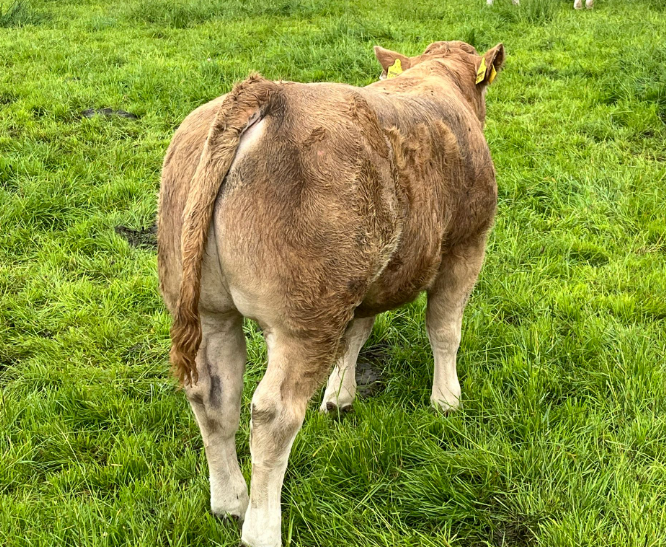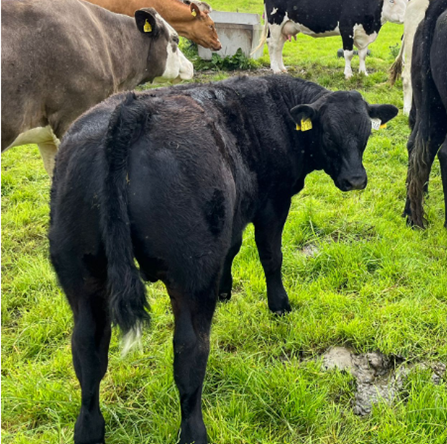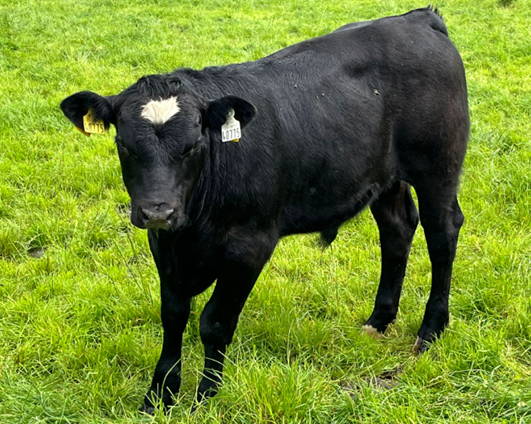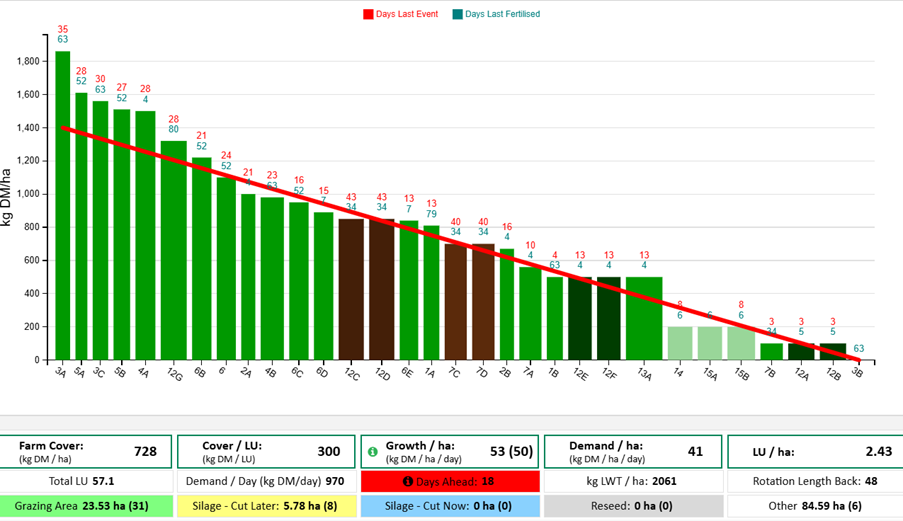Winter fodder
June is a good month to complete a fodder budget for the farm as it allows for opportunities to harvest a second cut and also potentially plan for a third cut if necessary. After the relatively short winter of 2024/2025, 100 bales of silage remained in the yard. Ger likes to complete a fodder budget by June as it allows him to plan for the winter ahead which in turn allows Ger to make adjustments if necessary. The first step in completing the budget is to determine the projected stock numbers over the winter period, in this case Nov to Mar inclusive and to also allow an extra month as a buffer. In Gers case the stock numbers are 38 suckler cows, 22 6-12 months, 22 12-24months and 1 >24months animals. The calves to be born in 2026 are excluded as their intakes will be negligible for the first 3-4 months. The next step is to calculate the tonnes of dry matter required for that period (see table 1). Ger will turn yearling heifers out to grass in early February, but its better to plan for a longer winter. From this calculation we can see that 148 tonnes of dm is required for a 6 month winter for Gers farm.
| Animal Type | No of Stock to be kept over winter | No of Months (include 4 week Reserve) | Pit Silage Needed (T/animal/Month) | Total Tonnes | DM % | Total Tonnes DM |
|---|---|---|---|---|---|---|
| Dairy Cows | 0 | 25 | 0 | |||
| Suckler Cows | 40 | 6 | 1.4 | 336 | 25 | 84 |
| 0-1 Year old | 22 | 6 | 0.7 | 92.4 | 25 | 23 |
| 1-2 Year old | 22 | 6 | 1.3 | 171.6 | 25 | 43 |
| 2+ Year old | 1 | 6 | 1.3 | 7.8 | 25 | 2 |
| Ewes | 0.15 | 0 | 25 | 0 | ||
| Total Tonnes needed | 607.8 | 25 | 152 |
Table 1. Winter fodder required on the farm
The next step is to work out what silage stocks are currently on the farm. From last years silage tests the dry matter was 38%. For 2025 35% dry matter is used to err on the side of caution. We are putting in a planned second cut of 150 bales which will be made in July.
| Bale Wrap Silage | Number of Bales | Yield T/Bale | Total Yield Tonnes | DM% | Total Tonnes DM |
|---|---|---|---|---|---|
| Silage left over from 2024 | 100 | 0.8 | 80 | 38 | 30.4 |
| Cut 1 | 300 | 0.8 | 240 | 35 | 84 |
| Planned Cut | 150 | 0.8 | 120 | 35 | 42 |
Table 2. Current silage in stock and planned silage to be made
| Tonnes of Dry Matter available | 156 |
| Tonnes of Dry Matter required | 152 |
| Balance | 4 |
From table 2 we can see that Ger will have a surplus of silage in stock facing into the winter. Ger has 156 tonnes of dry matter available and he requires 152 tonnes of dry matter leaving a surplus of 4 tonnes of dry matter after a 6 month winter period. This will mean that no third cut is required and that allows Ger to reduce his demand and build covers for the autumn from the second week in august.
Performance
The bulls were sold for finish at the end of April, Ger was disappointed with how the animals performed. The bulls were finished on average at 14.9 months of age on average which is younger than the bulls finished in 2024. If the bulls had been kept on the farm for a further month they could potentially have gained another 60kg of liveweight (2kg liveweight gain per day) which at a kill out of 58% would equate to another 34.8kg of carcass weight bringing the average up to 397kg.

Herd Average: Finishing Performance
- Carcass Weight: 362 kg
- Carcass Grade: U-
- Carcass Fat: 2+
- Age at Finish (months): 14.9
The yearling heifers were weighed around mid June and their average weight was 453kg. These heifers had gained a kilo a day since their last weighing. The heifer calves were also weighed on the same day and they average 186kg and had gained 1.12kg of liveweight since birth. The heifer and bull calves have been separated and will now be run as 2 separate mobs for the duration of the grazing season. The bull calves haven’t been weighed yet but are due to be weighed in early august. Below are some photographs of the bull calves on the farm at the moment:

Bull calf 50776
DOB 5th Feb 25
Sire LM4407 Tweedale Lennox
CBV €305
Myostatin status: 1 copy each of both F94L and Q204X

Bull calf 70761
DOB 14th Jan 2025
Sire CH4159 Knockmoyle 10 Loki ET
CBV €291
Myostatin status: 1 copy each of both F94L and NT821DEL11

Bull calf 70778
DOB 8th Feb 2025
Sire CH4159 Knockmoyle 10 Loki ET
CBV €296
Myostatin status: 1 copy of F94L

Bull calf 50768
DOB 20th Jan 2025
Sire LM8259 Keltic Rembrandt
CBV €309
Myostatin status: 1 copy of F94L

Bull calf 40775
DOB 3rd Feb 2025
Sire LM8622 Ardlea Rigby ET
CBV €244
Myostatin status: 1 copy of F94L
Grassland management and breeding update
The farm cover was 728kg of DM/ha with cattle grazing covers just over 1400kg DM in general. The quality of the grass was good with a lot of leaf present in most swards. The paddocks did not look stressed or heading out. Up until the 1st of July Ger had grown just over 4.8 tonnes of dm per ha. For the same period in 2024 Ger grew 4.6tonnes of dm per ha. Ger should grow another 5tonnes of dm per ha for the remainder of the year. Cows are generally allocated 24hours of grass daily and post grazing residuals are very low so subsequent grazings are generally very good quality. The first cut was made in the end of May with the second cut being planned for mid July. Silage yields were generally good and there was a surplus of silage remaining since 2024. A fodder budget will be completed after the second cut to ensure enough fodder is made. Below is the grass wedge from the 28th of June.

The grass wedge chart from June 28th 2025 for Ger McSweeney’s farm shows average grass cover of 728 kg of dry matter per hectare, with most grazing paddocks just over 1,400 kg DM/ha. Grass growth is at 53 kg DM/ha/day, ensuring there is a good supply of grass available. Grazing is well managed with regular grazing intervals and silage plans are in place.
The breeding season ended at the end of May allowing for all cows and replacements to be bred within a 9 – 10 week period. Cows commence calving at the last week in January. Overall the breeding season went well. 1 heifer did not hold to ai, unfortunately she was a well bred maternal type Simmental. Scanning results will confirm any empties.
